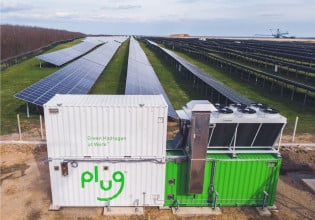Advanced Heat Transfer Material Unveiled by Versarien
On the opening day of Electronica 2012, Versarien Ltd. announced the release of a ground-breaking, micro-porous metallic material that it has perfected, with which it aims to radically change the field of thermal management. Utilizing proprietary process technology, developed through pioneering metallurgy research conducted at the University of Liverpool, the VersarienCu product proves to be up to 10 times more effective at transferring heat energy than conventional micro-channel heat sinks of equivalent size - with a heat transfer coefficient of approximately 150 - 200 kW/m2K being achieved.
The patented Lost Carbonate Sintering (LCS) process employed to produce VersarienCu allows a homogeneous distribution of micro-fine pores throughout the copper base material. The open cell porous metal structure thus created permits a dramatic reduction in heat sink weight and physical dimensions compared to competing products for a given level of heat transfer, resulting in considerably smaller form factors. Pore diameters from 20 µm to 1 mm can be specified, with porosity levels of up to 85% provided.
VersarienCu can address a broad spectrum of different applications. These include data communications, renewable energy, power distribution, avionics, defense, automotive, transportation, gaming and motorsport.
"The increased complexity of semiconductor devices and on-going reduction in their footprint means that heat generated at board level is rising sharply. If this heat cannot be dissipated effectively then system reliability is put at risk," states Neill Ricketts, CEO and founder of Versarien Ltd. "Simultaneously the migration from incandescent lamps to solid state lighting, while offering many environmental and performance benefits, sets major challenges for engineers when it comes to dealing with the large quantity of heat produced.
"The LCS process used to create VersarienCu presents a simple, highly versatile and cost-effective way to create porous metals for heat transfer activity," he continues. "The fine, open, interconnected pores formed allow major performance improvements to be realized -- with thermal transfer levels that are an order of magnitude better than what alternative thermal management solutions currently on the market are capable of."






